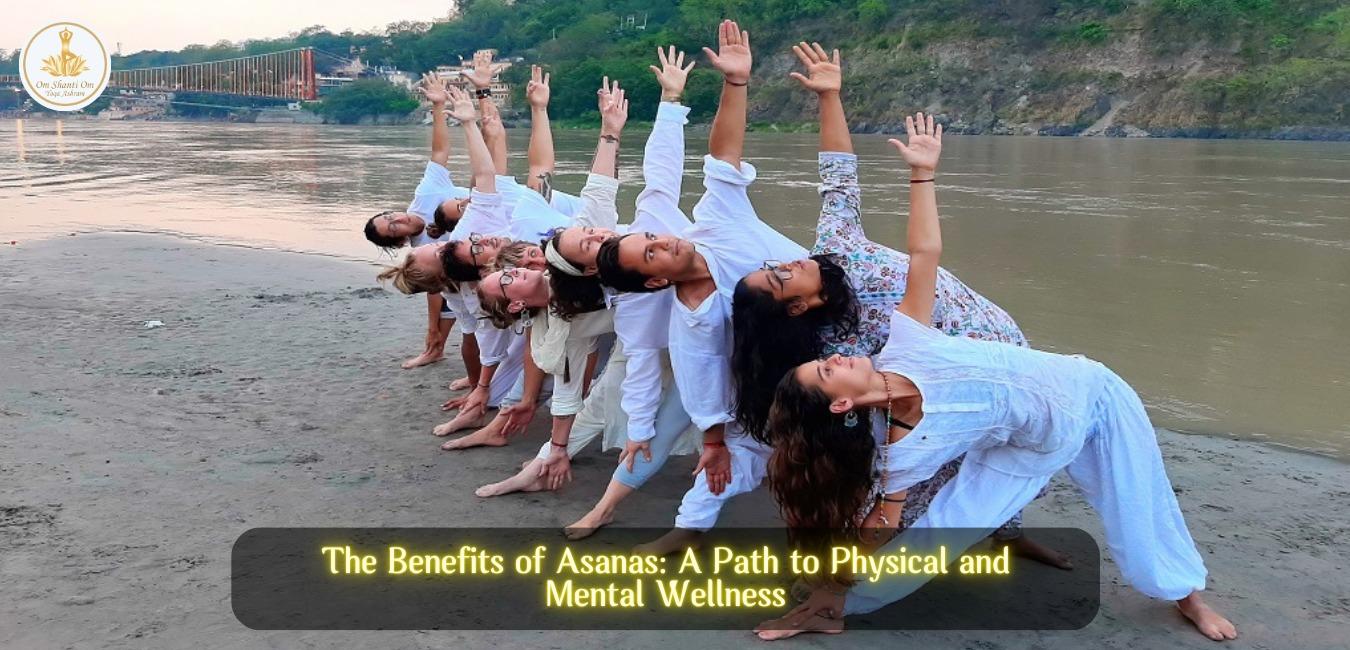What Are Asanas? A Complete Guide to the Art of Yogic Postures

If you're new to yoga or even an experienced practitioner, you may still wonder: what are asanas and why do they hold such a central place in yoga practice? The term "asanas" is often misunderstood as merely a set of physical exercises, but its meaning and significance go far beyond that.
In this comprehensive guide, we’ll dive deep into what asanas are, their historical roots, benefits, types, and how they connect the body, mind, and spirit.
What Are Asanas?
To answer the question what are asanas, we need to understand their origin. The word asana is derived from the Sanskrit root "ās", which means "to sit" or "to be present". In the traditional yogic context, asana originally referred to a seated posture used for prolonged meditation.
However, in modern yoga, asanas are the physical poses or postures practiced as part of a larger yogic lifestyle. Each asana involves specific body positions designed to increase physical flexibility, build strength, and create a sense of balance and calm in the mind. But more importantly, they serve as tools for self-awareness and inner transformation.
The Historical Background of Asanas
Understanding what are asanas also involves looking into their history. The earliest references to asanas can be found in ancient yogic texts like the Yoga Sutras of Patanjali, where asana is listed as the third limb of the eightfold path of yoga (Ashtanga Yoga).
In these texts, only seated meditation postures like Padmasana (Lotus Pose) or Sukhasana (Easy Pose) were considered asanas. Their primary goal was to keep the body still and steady for deep meditation.
Over centuries, with the influence of Hatha Yoga traditions, the practice of asanas expanded to include dynamic postures for health, vitality, and spiritual growth. Today, yoga asanas are practiced worldwide for both physical fitness and inner peace.
Types of Asanas
To fully grasp what are asanas, it’s helpful to understand the different types, each offering unique benefits:
1. Standing Asanas
These include postures like Tadasana (Mountain Pose), Virabhadrasana (Warrior Pose), and Trikonasana (Triangle Pose). They enhance balance, stability, and leg strength.
2. Seated Asanas
Such as Padmasana, Vajrasana, and Paschimottanasana (Seated Forward Bend), these postures are great for meditation, digestion, and spine flexibility.
3. Backbends
Examples include Bhujangasana (Cobra Pose) and Ustrasana (Camel Pose). They open the heart, stimulate the nervous system, and strengthen the spine.
4. Forward Bends
These calm the nervous system and stretch the entire back body. Examples include Uttanasana (Standing Forward Bend) and Janu Sirsasana (Head-to-Knee Pose).
5. Twisting Asanas
Twists like Ardha Matsyendrasana (Half Lord of the Fishes Pose) detoxify internal organs and increase spinal flexibility.
6. Balancing Asanas
Balancing poses like Vrikshasana (Tree Pose) improve focus and stability.
7. Inversions
Poses like Sarvangasana (Shoulder Stand) and Sirsasana (Headstand) enhance circulation, mental clarity, and energy.
Physical and Mental Benefits of Asanas
Once you know what are asanas, it’s easy to see why they are so popular worldwide. Their benefits are both physical and psychological:
-
Improved flexibility and posture
-
Increased muscle strength and tone
-
Better respiratory function
-
Improved circulation and digestion
-
Reduced stress and anxiety
-
Enhanced mental focus and clarity
-
Detoxification of organs
-
Spiritual growth and self-awareness
Unlike regular exercise, asanas are performed mindfully, with a strong focus on breath and inner awareness. This mindful movement bridges the gap between the body and mind, promoting holistic well-being.
The Role of Breath in Asanas
Breathing plays a vital role in asana practice. In fact, many yoga traditions emphasize pranayama (breath control) alongside asanas. Each movement is synchronized with inhalation or exhalation, making the practice meditative rather than purely physical.
This coordination of breath and movement allows the practitioner to stay present in each pose, reducing mental chatter and creating a deeper state of consciousness.
How to Begin Your Asana Practice
Now that you understand what are asanas, how do you begin practicing them?
-
Start with beginner-friendly poses like Tadasana, Cat-Cow Stretch, or Child’s Pose.
-
Practice regularly, even if only for 10–15 minutes a day.
-
Focus on form, not perfection. Yoga is a journey, not a competition.
-
Listen to your body. Don’t push into pain—ease into growth.
-
Learn from a certified instructor, online or in person, to ensure safe and effective practice.
Conclusion: More Than Just Movement
So, what are asanas? They are far more than just stretches or physical fitness routines. Asanas are sacred tools designed to bring harmony to the body, clarity to the mind, and peace to the spirit.
Whether you're looking to increase flexibility, reduce stress, or deepen your spiritual path, practicing asanas mindfully can be a transformative experience. Remember, the goal of asana is not to touch your toes—it’s to create balance, awareness, and connection within yourself and with the world around you.






